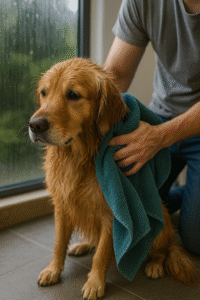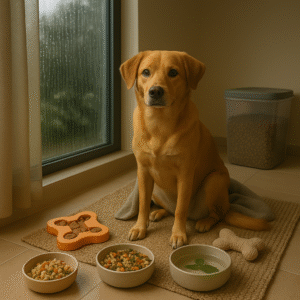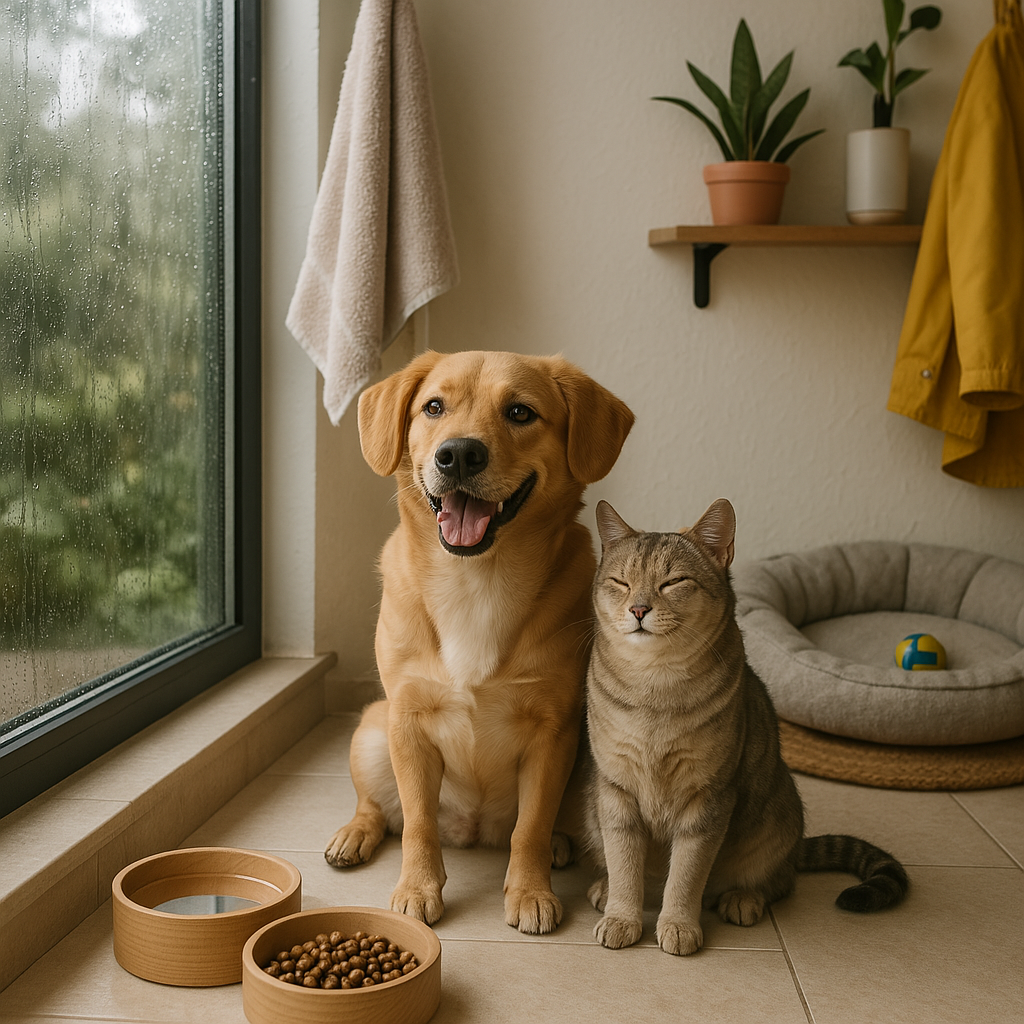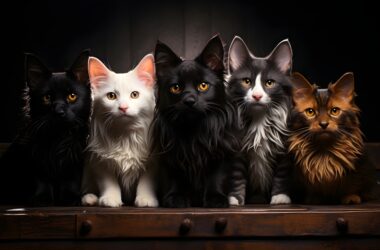The monsoon season brings relief from the heat but poses several challenges for pet owners in India. With 2025 seeing increased humidity and rainfall, extra care is needed. Pet care Indian Monsoons requires planning, awareness, and consistent hygiene practices. Moisture and wet surroundings lead to infections, allergies, and emotional discomfort in pets. Pets become more vulnerable to ticks, fleas, and fungal problems during rains. Wet fur can cause skin irritation, especially in long-haired breeds. Indoor boredom can lead to anxiety and lethargy in active pets. The slippery outdoors makes walks risky and unpleasant. Food spoilage is quicker due to humidity. Clean drinking water becomes crucial during monsoons. Many pets also fear thunder and lightning. Their routines change, affecting their behavior and health. Pet care Indian Monsoons means creating safe indoor spaces and consistent outdoor hygiene. It’s about adapting schedules and routines for better well-being. Monsoons can be fun when pets are protected wisely.
1. Grooming and Hygiene in Wet Weather
Grooming becomes essential during rainy days. Wet fur can become a breeding ground for bacteria and fungus. Regular brushing helps keep the coat dry and detangled. Use anti-fungal powders recommended by vets. Dry your pet completely after every walk or bath. Special pet towels or blow dryers work well. Avoid walking pets in muddy or stagnant water. Moisture in paws can cause fungal infections. Clean paws with antiseptic wipes after walks. Tick and flea control must be regular and effective. Check fur, ears, and paws for hidden ticks. Ears should be cleaned with vet-approved solutions. Water in ears can cause ear infections. Nails should be trimmed to prevent mud accumulation. A short coat can make cleaning easier. Long-haired pets need more attention and brushing. Maintain dry bedding and change it frequently. Avoid synthetic materials that trap moisture. Pet care Indian Monsoons means staying one step ahead of potential infections.

2. Nutrition, Exercise, and Mental Stimulation
Monsoons reduce outdoor activity for pets. Lack of exercise can lead to obesity and irritability. Indoor play sessions are essential for mental health. Use puzzle toys to stimulate your pet’s brain. Try short indoor walks in hallways or balconies. Avoid feeding stale or moist food. Pet food can spoil quickly due to high humidity. Store kibble in airtight containers. Fresh home-cooked meals are safer during monsoons. Ensure food is warm, well-cooked, and vet-approved. Hydration is extremely important during this season. Provide clean, filtered water to prevent infections. Add pet-safe herbs like basil for immunity. Avoid feeding oily or raw food during rains. Some pets may have poor appetite in monsoons. Consult a vet if eating patterns change drastically. Maintain a regular feeding schedule. Overfeeding should be avoided in less active pets. Pet care Indian Monsoons also includes checking your pet’s weight. Balanced meals keep immunity strong.

3. Comfort, Safety, and Thunder Anxiety
Many pets get anxious due to thunder and lightning. Loud sounds affect their behavior and sleep. Provide a quiet, secure place during storms. Use calming sprays or pheromone diffusers if needed. White noise or soft music can mask thunder. Avoid cuddling a scared pet excessively. Stay calm so your pet feels secure. Use anti-anxiety wraps or vet-approved meds if required. Keep all wires and sockets dry and safe. Pets may chew wires during panic or boredom. Avoid taking pets out during heavy rainfall. Wet roads are slippery and dangerous for small pets. Use raincoats and paw covers when stepping out. Keep emergency vet contacts ready. Mosquitoes and insects rise in number during monsoons. Use pet-safe repellents and nets. Ensure your home is pest-free and dry. Keep an eye on your pet’s behavior daily. Pet care Indian Monsoons must prioritize comfort and calmness. This creates a stress-free rainy season for all.

Conclusion: The Essential Dos and Don’ts
The monsoons need thoughtful action for pet safety. Prioritize cleanliness, calmness, and care throughout. Always dry your pet after every outing. Never let them play in stagnant water. Feed fresh food and store pet food correctly. Don’t ignore reduced appetite or activity. Give clean drinking water daily. Avoid street food or spicy treats. Keep nails and ears clean and dry. Don’t bathe pets too often—dry shampoo is better. Exercise pets indoors when roads are slippery. Avoid all outdoor exposure during storms. Use calming aids if thunder scares your pet. Do not scold pets for monsoon accidents. Use absorbent mats in the house. Keep emergency kits and vet contact handy. Watch for ticks, fleas, or sudden rashes. Don’t delay if you notice discomfort. Pet care Indian Monsoons is about prevention, not cure. When followed consistently, monsoon becomes safe and happy. Our furry friends deserve nothing but the best care year-round.
Utpal Khot
Copyright © Utpal K
1. If you share this post, please give due credit to the author Utpal Khot
2. Please DO NOT PLAGIARIZE. Please DO NOT Cut/Copy/Paste this post.
© Utpal K., all rights reserved.
Copyright Notice: No part of this Blog may be reproduced or utilized in any form or by any means, electronic or mechanical including photocopying or by any information storage and retrieval system, without permission in writing from the Blog Author Utpal Khot who holds the copyright.





